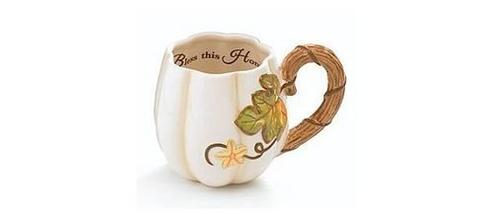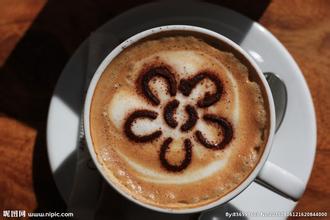Introduction to the characteristics of Santa Cruz Manor
Ecuador, formerly part of the Inca empire. It was colonized by Spain in 1532. Independence was declared on August 10, 1809, but it was still occupied by the Spanish colonial army. It was completely freed from Spanish colonial rule in 1822. Joined the Republic of Greater Columbia in 1825. After the disintegration of Great Colombia in 1830, the Republic of Ecuador was proclaimed. Since the founding of the people's Republic of China, the political situation of Ecuador has been unstable and coups have occurred one after another. Literati and military governments have been in power for as many as 19 times. The literati government came to power in August 1979, ending the military rule since 1972. Latitude and longitude: 2 °13 & # 39 south latitude, 79 °54 & # 39 west longitude.
Ecuador, the full name of the Republic of Ecuador (Spanish: Rep ú blica del Ecuador), a member of the Union of South American Nations, is located in the northwest of South America, bordering Colombia in the north, Peru in the south, the Pacific Ocean in the west, and Chile, which is not adjacent to Brazil in South America, and has the Galapagos Islands, 1000 kilometers from Ecuador. Quito, the capital, is located in the foothills of the Picenza volcano. The Republic of Ecuador is located in northwestern South America. It is bordered by Colombia in the northeast, Peru in the southeast and the Pacific Ocean in the west. It covers an area of 283561 square kilometers and the coastline is about 930km long. Originally inhabited by Indians, it belonged to the Inca Empire in the 15th century, became a Spanish colony in 1532, joined Greater Colombia after independence in 1822, established a republic from Greater Colombia in 1830, and established diplomatic relations with China on January 2, 1980. Ecuador was originally part of the Inca empire. It was colonized by Spain in 1532. Independence was declared on August 10, 1809, but it was still occupied by the Spanish colonies. It was completely freed from Spanish colonial rule in 1822 and became part of the Republic of Greater Columbia. After the disintegration of Great Colombia in 1830, the Republic of Ecuador was proclaimed. Since the founding of the people's Republic of China, Ecuador has been politically unstable and coups have occurred one after another. Literati and military governments have taken over as many as 19 times. The literati government came to power on August 10, 1979, ending the military rule since 1972. Rodrigo Borja Cevallos, elected on August 10, 1988, was sworn in as president. On January 15, 2007, Correa was sworn in as President of Ecuador and was re-elected in April 2009. Capital: Quito administrative division: territorial area of 283600 square kilometers. Ecuador is divided into 22 provinces [see Annex 1]
Administrative divisions] of which 10 provinces belong to mountainous areas, 5 provinces belong to coastal areas, 6 provinces belong to the eastern and Amazon regions, and 1 province belongs to the Galapagos Islands. The best Ecuadorian coffee in 193 counties, 322 towns and 757 rural towns is grown on St. Cristobal Island in the Galapagos Islands, which has the natural geographical conditions unique to brewing the best quality coffee in the world. A cup of Galapagos coffee, like the beautiful scenery of the Galapagos Islands, is sure to impress you.
In the mid-15th century, there were legends about enchanted mysterious islands among fishermen fishing in the western Pacific Ocean of South America. It is said that the islands can sometimes be seen clearly from a distance, but when the ship approaches, it disappears again; sometimes it looks like a galleon, sometimes it shows the shape of a witch. Fishermen call these islands "Devil Island", thinking that they may be ruled by demons like the sea banshees in the Odyssey. And this island, which fishermen call "Magic Island", is today's Galapagos Islands. When Thomas and his crew landed on the island, they were frantically looking for water and were so thirsty that they squeezed juice from the fat leaves of the cactus to drink. At last a source of water was found in a rocky gully. Thomas attributed it to the gift of God, because it was good Friday, and they had piously celebrated mass before they set out in search of water. But Thomas will never know that the island they landed on is the only island in the Galapagos with plenty of fresh water. It is today's Saint Cristobal St. Cristobal, a larger island in the Galapagos archipelago, where there is a small lake called El.Junco 410m above sea level. The lake forms several streams that flow along the rocks and volcanic rocks on the southern slope of the island, and mineral-rich fresh water moistens the land of St. Cristobal, keeping the soil moist and fertile. It provides the most rare conditions for the growth of coffee here.
In 1875, 340 years after Frey Thomas de Belanga discovered the island, an indigenous man named Corvus came to St. Cristobal, where he established the Hasunda Coffee Garden and planted about 100 hectares of Arabian bourbon coffee trees. Because the plantation is located between 140m and 275m above sea level and the climate is equivalent to that of inland 915m ~ 1830 m, the unique geographical conditions are very suitable for the growth of high acidity extra hard coffee beans (SHB), so this kind of high-quality coffee has settled down here.

Important Notice :
前街咖啡 FrontStreet Coffee has moved to new addredd:
FrontStreet Coffee Address: 315,Donghua East Road,GuangZhou
Tel:020 38364473
- Prev

Floral and fruity Panamanian coffee Jade Manor Coffee flavor and taste characteristics
Pacamara is like the acidity of a green apple, especially charming with sweet and milky desserts. Those who are afraid of sour touch less. Kenyan beans are medium to large in size, thick and round in meat, with good taste, thick and full-bodied taste, with berry as the main flavor, moderate acidity and unique flavor. The grade is divided into seven grades according to the size of coffee beans, and one flavor is divided from top to bottom.
- Next

Ecuadorian coffee with different flavors Taste Manor Introduction Hasenda Coffee Garden
Western coastal areas: including coastal plains and foothills, east high west low, generally below 200 meters above sea level, there are some hills and low mountains 600~700 meters above sea level. Tropical rain forest climate, the southernmost start to transition to a savanna climate. The annual average precipitation decreases from more than 3000 mm to about 500 mm from north to south. The Andes range from Colombia to Ecuador.
Related
- Does Rose Summer choose Blue, Green or Red? Detailed explanation of Rose Summer Coffee plots and Classification in Panamanian Jade Manor
- What is the difference between the origin, producing area, processing plant, cooperative and manor of coffee beans?
- How fine does the espresso powder fit? how to grind the espresso?
- Sca coffee roasting degree color card coffee roasting degree 8 roasting color values what do you mean?
- The practice of lattes: how to make lattes at home
- Introduction to Indonesian Fine Coffee beans-- Java Coffee producing area of Indonesian Arabica Coffee
- How much will the flavor of light and medium roasted rose summer be expressed? What baking level is rose summer suitable for?
- Introduction to the characteristics of washing, sun-drying or wet-planing coffee commonly used in Mantenin, Indonesia
- Price characteristics of Arabica Coffee Bean Starbucks introduction to Manning Coffee Bean Taste producing area Variety Manor
- What is the authentic Yega flavor? What are the flavor characteristics of the really excellent Yejasuffi coffee beans?

